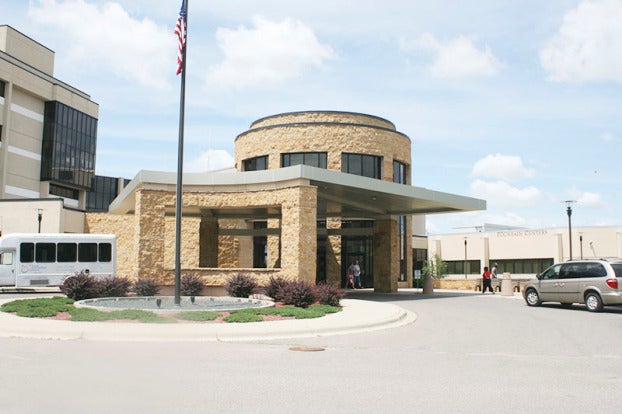Hundreds of Mayo nurses demand action on staffing crisis
Published 4:04 pm Wednesday, January 19, 2022
|
Getting your Trinity Audio player ready...
|
By Alex Guerrero
A petition demanding action to curtail the staffing crisis and recognize nurses’ sacrifices throughout the pandemic was filed this week by 672 nurse members of the Minnesota Nurses’s Association.
The signatures came from nurses in six Mayo Clinic Health System facilities in Albert Lea, Austin, Fairmont, Lake City, Mankato and Red Wing — more than 70% of the MNA’s members at those locations.
“We are understaffed,” said Kelly Rosevold, a registered nurse at Mayo Clinic-Mankato, who helped start the petition. “We’re overworked.”
Nurses have been on the front lines of the pandemic for almost 24 months, with little hope in sight.
“We’re losing nurses daily for various reasons,” she said. “Some to travel, some to take other opportunities with not much relief in sight.”
That, according to Rosevold, has made for a tougher environment.
“We deserve better than what we’re getting right now compensation-wise, short staffing-wise, working conditions-wise, nurses are… burnt out,” she said.
And it wasn’t about money. Instead, she wants nurses to feel respected.
Her petition was put into place before the holiday season.
Nurses’ demands, focused on retaining workers, call for nurses to be paid triple time for all hours worked (the same rate traveling nurses employed by Mayo make).
According to Rosevold, traveling nurses make, depending on their contracts, anywhere from $4,000 to 7,000/week).
“These are nurses that at some time have worked alongside us, maybe nurses who were previously employed at Mayo who left and came back as a traveling nurse,” she said.
She also wants Mayo to acknowledge their nurses’ decision to stay at Mayo and asks for a $4,000 bonus to be paid for every three months nurses remain on the job at Mayo.
“You hear some places in the metro throw their sign-on bonuses for every couple months you stay,” she said. “If you sign that you’re going to stay with a certain facility they’ll pay you a certain amount of dollars. Mayo doesn’t offer that. There’s nothing that Mayo offers that would be attractive for a nurse to want to stay there.”
The proposed changes would apply to contract members of the MNA in each of Mayo’s six facilities: Albert Lea, Austin, Fairmont, Lake City, Mankato and Red Wing.
She said the petition wasn’t a response to the pandemic but admitted the situation complicated the problem and said for every three nurses hired seven more are lost.
“They’re burnt out, they’re overworked,” she said.
Rosevold wasn’t certain what could happen if the MNA’s demands aren’t met, but said there would be a next step. She hopes to hear back from Mayo Clinic by Monday at the latest.
“[Mayo is] financially sound,” she said. “Mayo can do this. Mayo should want to do this to keep their hospitals successful, to keep their nurses here.”
According to Rosevold, there are needs on each unit every day for every shift.
“Nurses who worked their scheduled [full-time hours] are picking up an abundance over their FTE to help out the floors, to help fill the needs, but that’s just not enough,” she said. “We’re so understaffed right now that … even if every nurse picked up extra it’s still not enough to cover the holes.”
Mayo released the following statement about the petition:
“Mayo Clinic values its nursing staff and offers a highly competitive compensation package. Like other hospitals, our medical surgical units and ICUs at Mayo Clinic hospitals continue to be full and staffing challenges continue to persist, exacerbated with higher volumes of staff absences due to the high rates of COVID-19 transmission across our communities. We are working diligently to assist with the staffing issues, including offering premium pay and financial incentives, utilizing agency nurses, redeploying staff from outpatient areas to alleviate inpatient constraints, and in some cases, evaluating surgical listings and adjusting schedules as needed for patients whose health or quality of life will not be adversely affected by waiting.”






